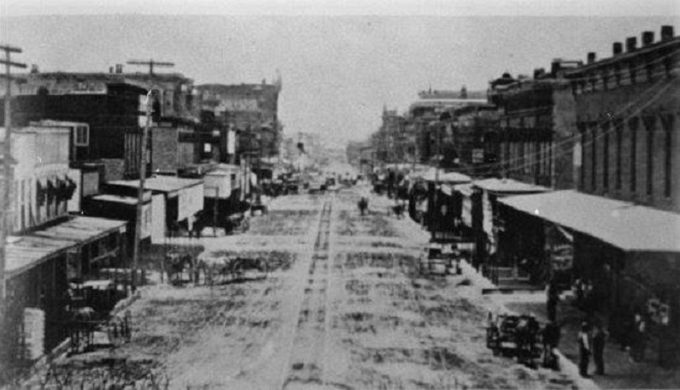A Texas State Historical Marker stands at the corner of 12th and Houston in Fort Worth, telling the story of a completely different side of this cultured and couth town. In celebration of the Chisholm Trail’s sesquicentennial, we would be remiss in not including some of the shadier sides of things, which may, in fact, have resulted in the development of a future Fort Worth economic base that hadn’t previously been there. Here, on this historical marker, you’ll find these words:
“A notorious red light district known as Hell’s Half Acre developed in this section of Fort Worth after the arrival of the Texas and Pacific Railway in 1876 launched a local economic boom. Fort Worth was soon the favorite destination for hundreds of cowboys, buffalo hunters, railroad workers, and freighters eager to wash off the trail dust and enjoy themselves. To meet the demand, a large number of saloons, dance halls, gambling houses, and bordellos opened between the Courthouse Square and the railroad depot. Illegal activities in Hell’s Half Acre were tolerated by city officials because of their importance to the town’s economy. The district prospered in the 1880s and added to Fort Worth’s growing reputation as a rowdy frontier town. Famous gamblers Luke Short, Bat Masterson and Wyatt Earp and outlaws Sam Bass, Eugene Bunch, Butch Cassidy and the Sundance Kid are known to have spent time in Hell’s Half Acre. A 1906 newspaper headline calling the district Fort Worth’s den of sin and refuge of criminals was representative of periodic efforts to clean up the district. These efforts proved unsuccessful until Army officials at Camp Bowie, established here during World War I, helped local officials shut the district down. (1993)”





